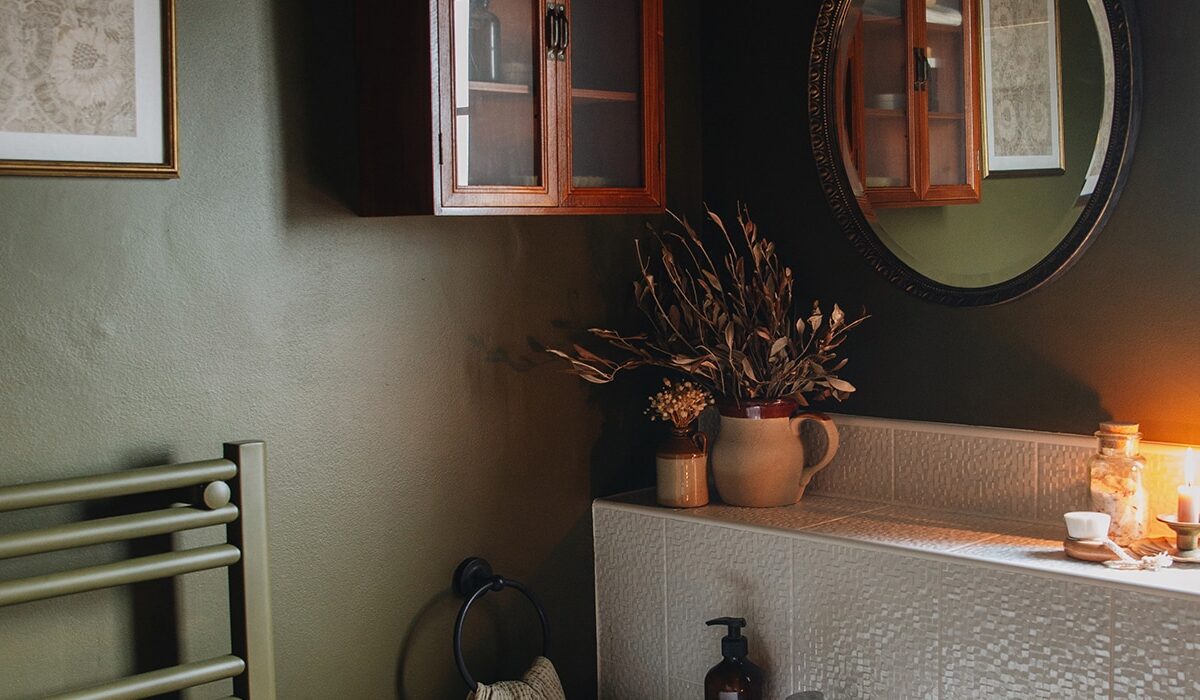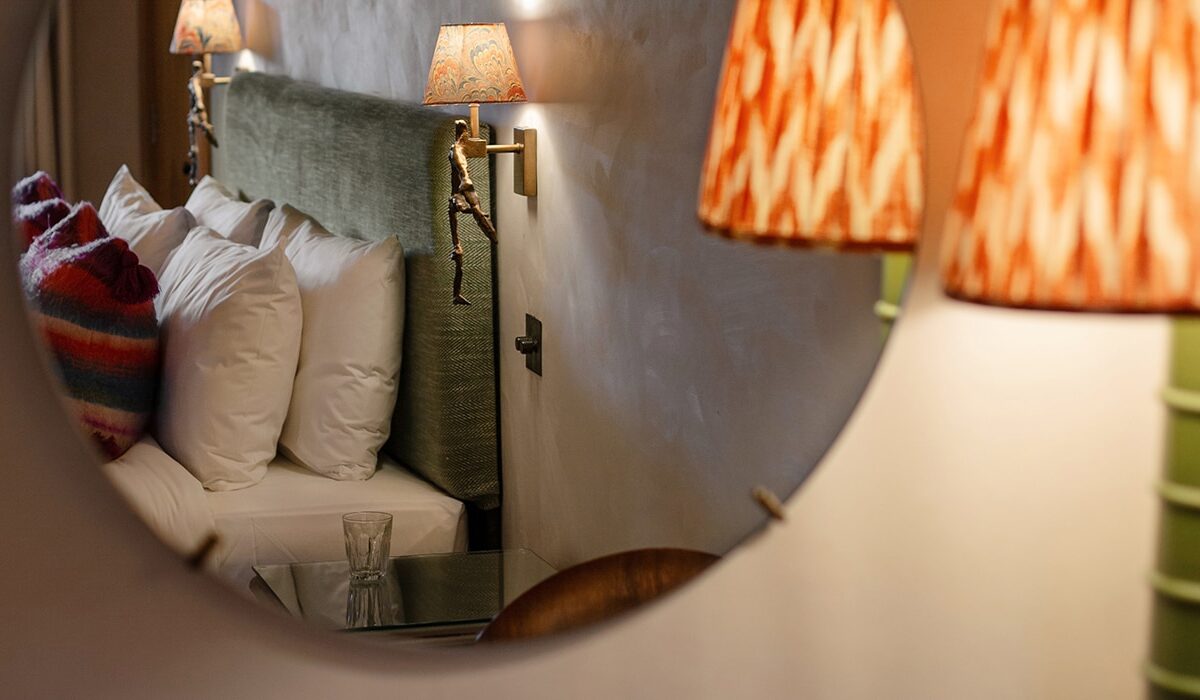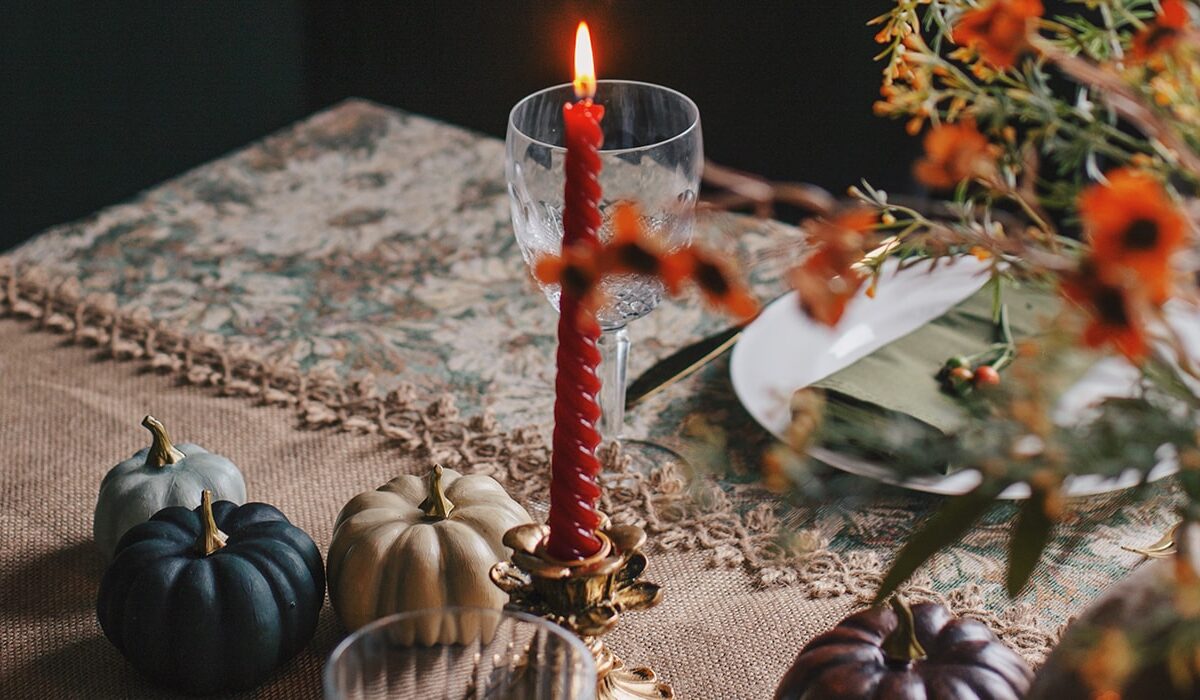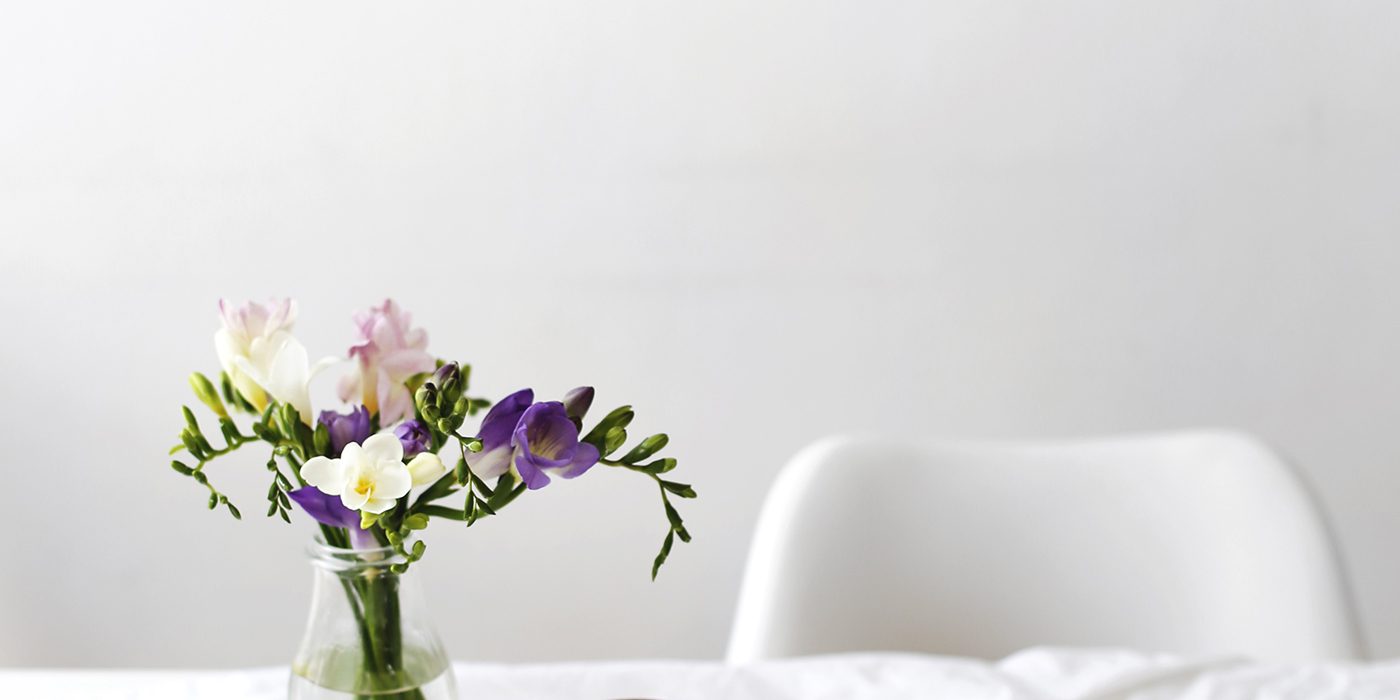
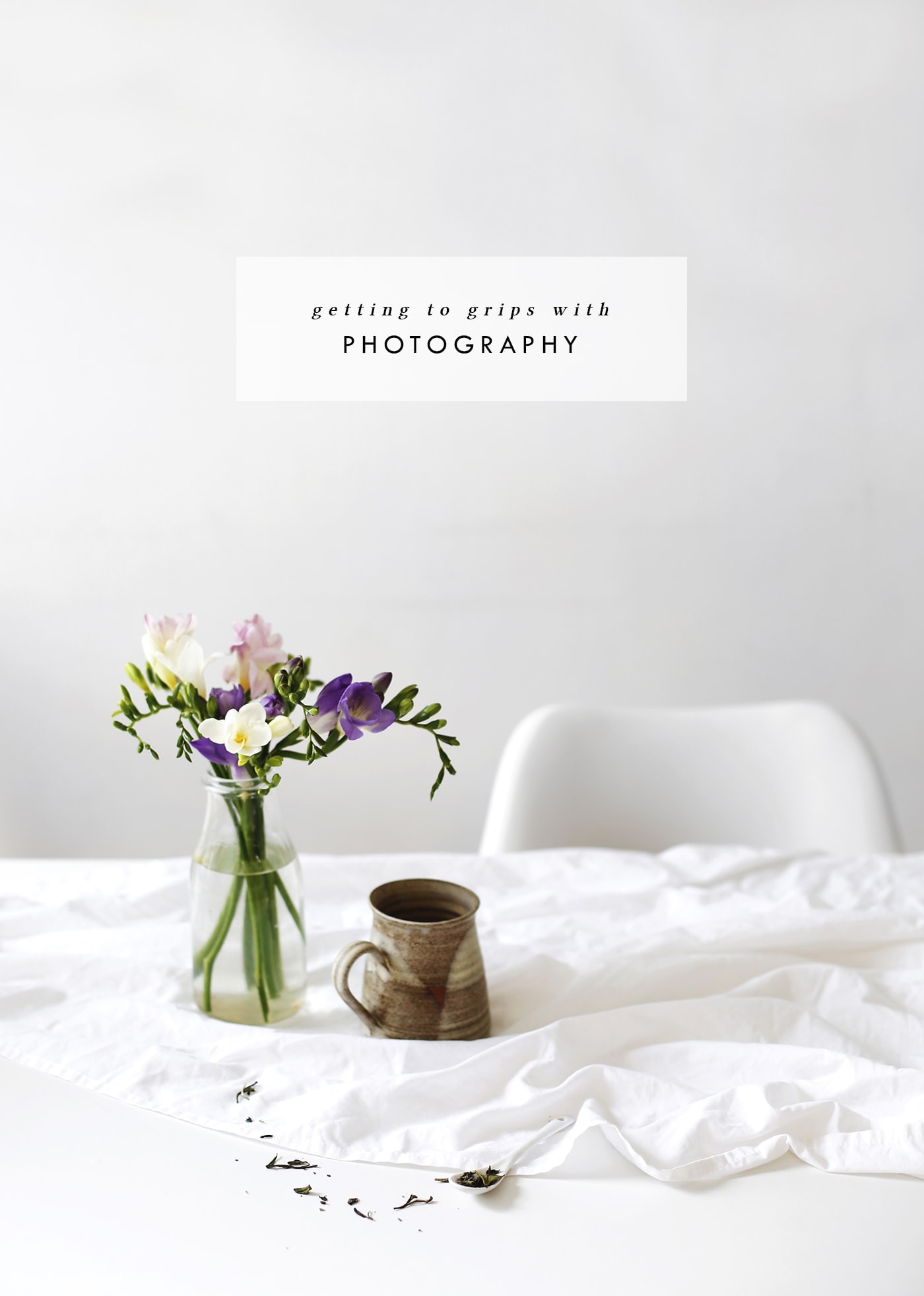
I’ve been looking forward to sharing this behind the screen post for a while as I frequently get asked how I take my photos. It’s been a while since my last post in the series and actually I’ve been writing this in drafts on my phone when I travel for months. The first draft dates back to January!! Even though people are very complimentary about my photos, it always makes me laugh as I still feel like such a novice. I wonder if that feeling ever wears off when you’ve taught yourself a skill. Somehow in my head it doesn’t count which is a ridiculous notion, as after all practise is how we really take hold of skills. I’m very comfortable with my way of working but at the same time would hate to have a professional looking over my shoulder taking note or asking my why I do certain things, as lots of the technicalities I don’t really know how to explain. I basically know what I do and what works. The most frequently asked question I get is how I get my photos so bright. Well part of the answer is within this post and part of it will be in my next post in the series on photo editing. I’ll let you into my little tricks of the trade that will make your photos pop!
Well I’ve certainly had a lot of practise at taking photographs. I’m very thankful that my blog has pushed me and given me the space to practise regularly. I’ve learnt what works and what should be archived in a bolted box never to be seen again. When I started The Lovely Drawer I was using my iPhone 3 for my snaps. I know, what on earth was going through my naive little head?? There was a whole lot of yellow, grainy images going on, overly processed with some kind of vintage Instagram filter on the top. My head wants to explode just thinking about it!
Then I upgraded to a little point and shoot number. It was still pretty dyer but at least the grain had gone and I started to think a smidgen more about how I shot things. I realised that 5pm on a winter’s evening was not going to cut it and started to unerstand that different angles could transform an image.
Then my world got turned upside down by a gift from the in-laws, a canon rebel T3i / EOS 600D. It was a humble DSLR but a DSLR none the less and a perfect starter camera for improving my photos. I was totally intimidated to start off with and couldn’t really understand all the F stops and what mode I would use when. It seemed like a whole lot to think about all of a sudden and I kind of just wanted to hide but as I said the blog forced me to keep on at it and push through. I would take soooooo many frames at the beginning as I really had no clue what would work. It felt very experimental and then a bit of a journey of discovery when I actually viewed the shots on the computer. There came a point, five months in where I realised I needed a better lens for shooting closes ups and product and so asked for a 50mm fixed length lens for Christmas. It was actually incredibly reasonable at under £100.00 and made the world of difference to my images. Suddenly I was able to achieve a greater depth of field (smaller point of focus) than before and I could take brighter images too.
It’s been a journey and it’s one I’m still on but I’ve compiled some of the tips that have helped me the most in creating images I’m proud of. Obviously my advice falls within my style which is light, bright and minimal but if that’s what you’re interested in, then read on.
USE NATURAL LIGHT
I always use natural light to this day and definitely think it’s the best way to start out. It requires much less equipment and gives your images a softness that doesn’t look staged or too forced. This is great for lifestyle blogs where you want it to look true to life (even if you’d usually have that space half filled with ugly clutter). Thankfully the best natural light in our flat is in the dining room and living room which is where I happen to spend most of my time but if the best light is your bedroom then perhaps think creatively as to how you could shoot in there. Please turn off all artificial lighting as you will end up with a horrible orangey glow or tint to your images that is hard to properly correct afterwards. I would also strongly advise not using a flash!! I think they have their place, in proper studios with all the right kit but not when it’s a flash gun at home. A flash will immediately make your image look totally flat so if it’s too dark to photograph, my two cents is…don’t photograph!
The best light for the kind of images I produce is from a bright but overcast day. This gives an even, flattering light without any harsh shadows. If the Sun is out and proud then you can either use some tracing paper taped to the window to diffuse the light or a white board to bounce light back on the other side of what your photographing. You may need to fiddle with the angle to get the most even light. Your aim is to fill in the darker areas with brightness, unless you’re going for a moodier shot.
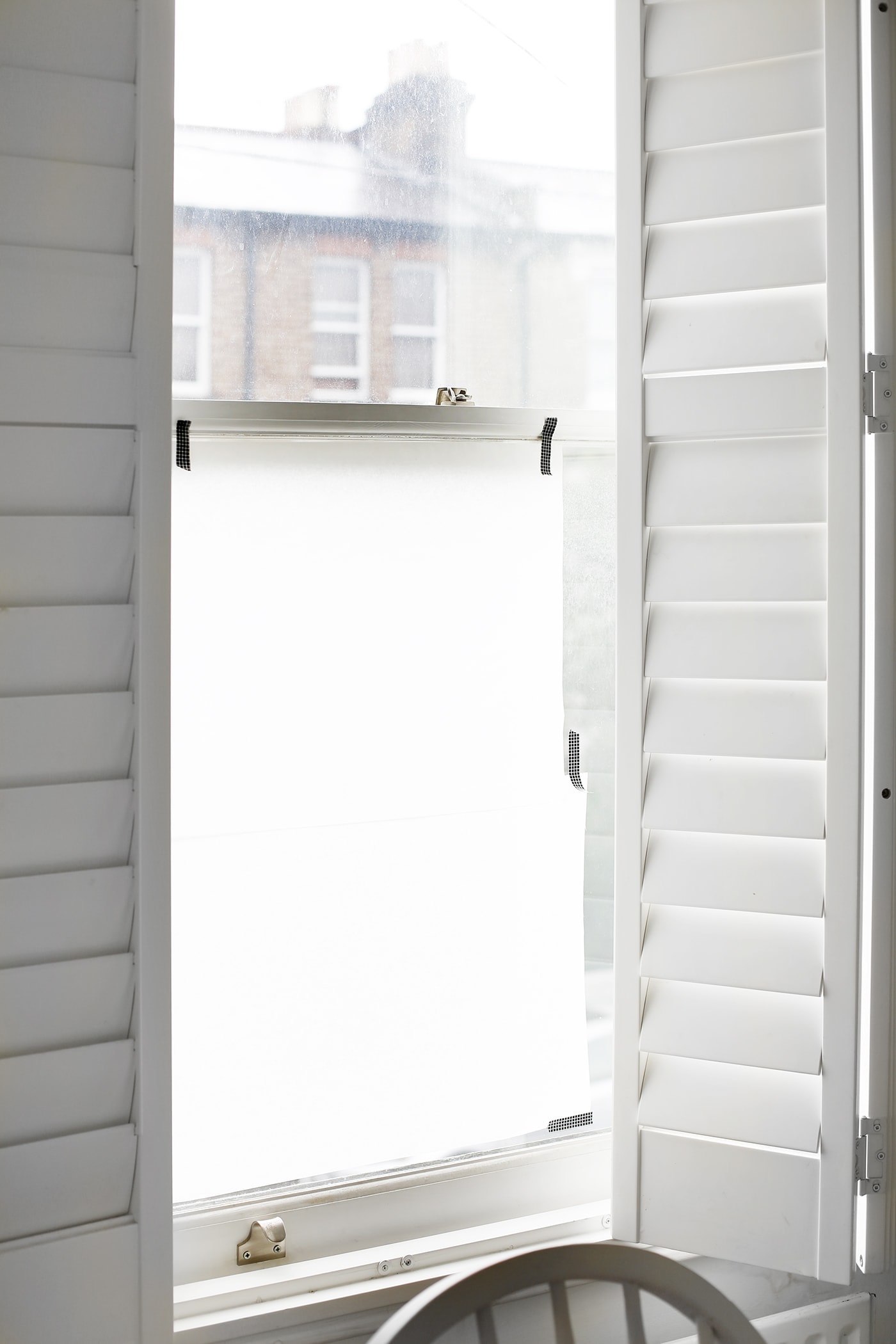
STAY FOCUSED!!
It’s a sad moment when you see a beautifully styled image with gorgeous light and yet no one point in the whole image is in pin sharp focus. It’s confusing on the eyes as you’re left clueless as to where the creator intended your primary attention to fall. What’s the focal point? Make sure you get your focusing skills honed so that all the rest of your hard work isn’t wasted. Whether you find it easier to do that manually or with auto focus, it doesn’t matter as long as you get the end result. On my Rebel T3i I used to use manual focus, finding it far more accurate and I liked the control it gave me but now I tend to autofocus on my Canon 5D as its has a much more sophisticated auto focus I can trust. The whole process is much quicker! Make sure you look at the shots and zoom in on the camera screen to check if you’ve locked down a focus. Then you know whether you’re good to move on or you should retake the shot.
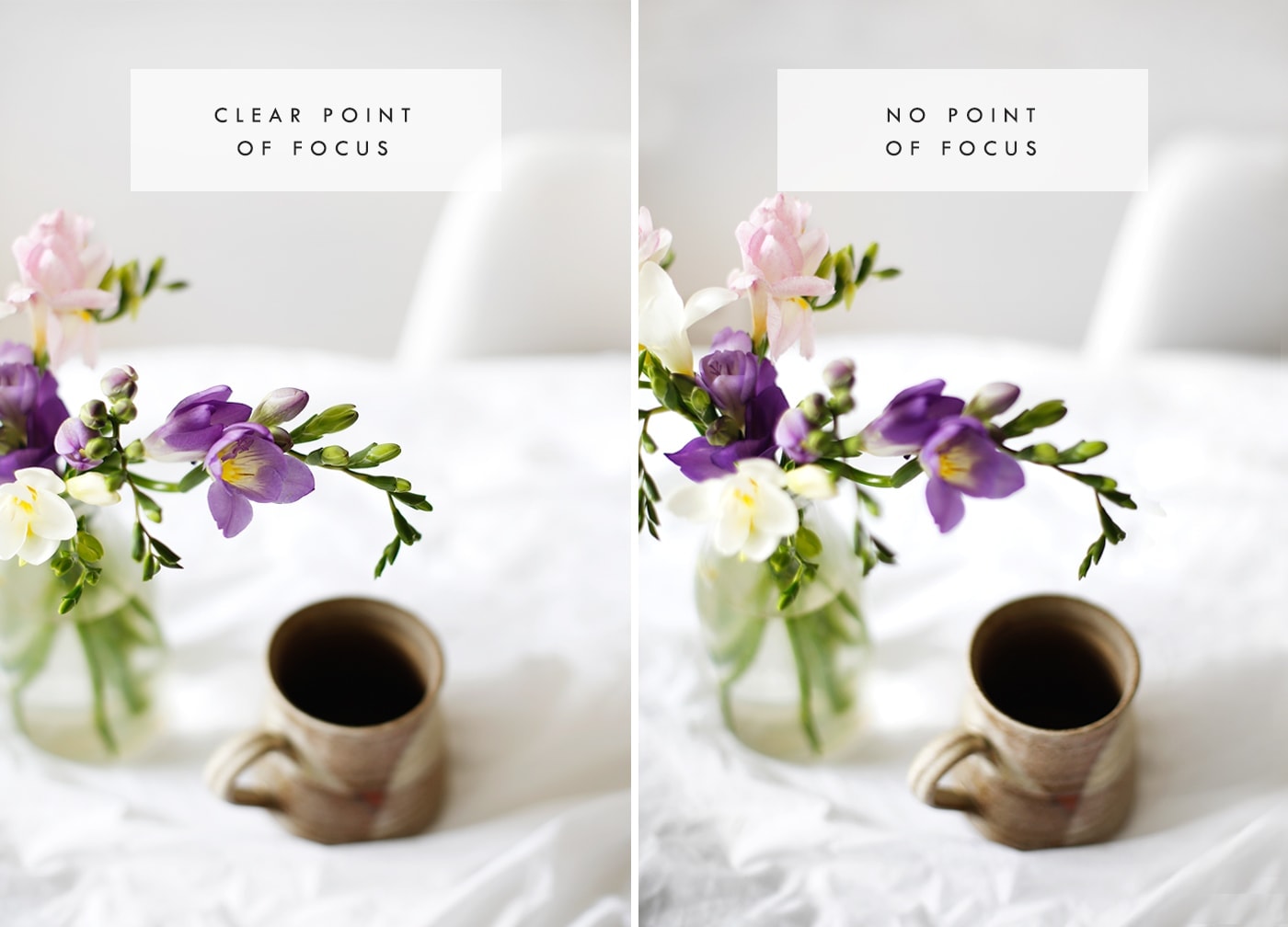
Sometimes focus can be helped with a tripod, particularly on darker days. This stops any camera shake and I would say it’s a great thing to have but I don’t tend to use one particularly now I have my Canon 5D mk iii. I’m up and moving around all the time, climbing on things so I feel like it holds me back a bit.
PLAY WITH APERTURE
You may be a bit confused about aperture but it’s a really great step to master as a little play can result in much more depth within the image and can imitate how the minds eye actually sees. You may not have realised but we don’t see everything in pin sharp focus. To put it simply aperture represents the size of your lens opening, and controls two aspects of the exposure. The first is how much light is let in and the depth of field (the area of focus within your image). In general the more light you let in the better because as I said you don’t want to be resorting to a flash (noooo). Creating a shallow depth of field allows you to have more control over what’s in and out of focus from the foreground to the background. This is where f-stops come in. Aperture priority mode or AV is a great setting for adjusting this. You select the aperture you want and then the camera selects a suitable shutter speed to match so you get the proper exposure. I nearly always work in this mode. Using a lower f-stop will create a smaller depth of field and using a higher f -stop will create a larger depth of field. In general the only time I would use a higher f-stop is for photos taken directly overhead where I want everything in focus as much as possible.
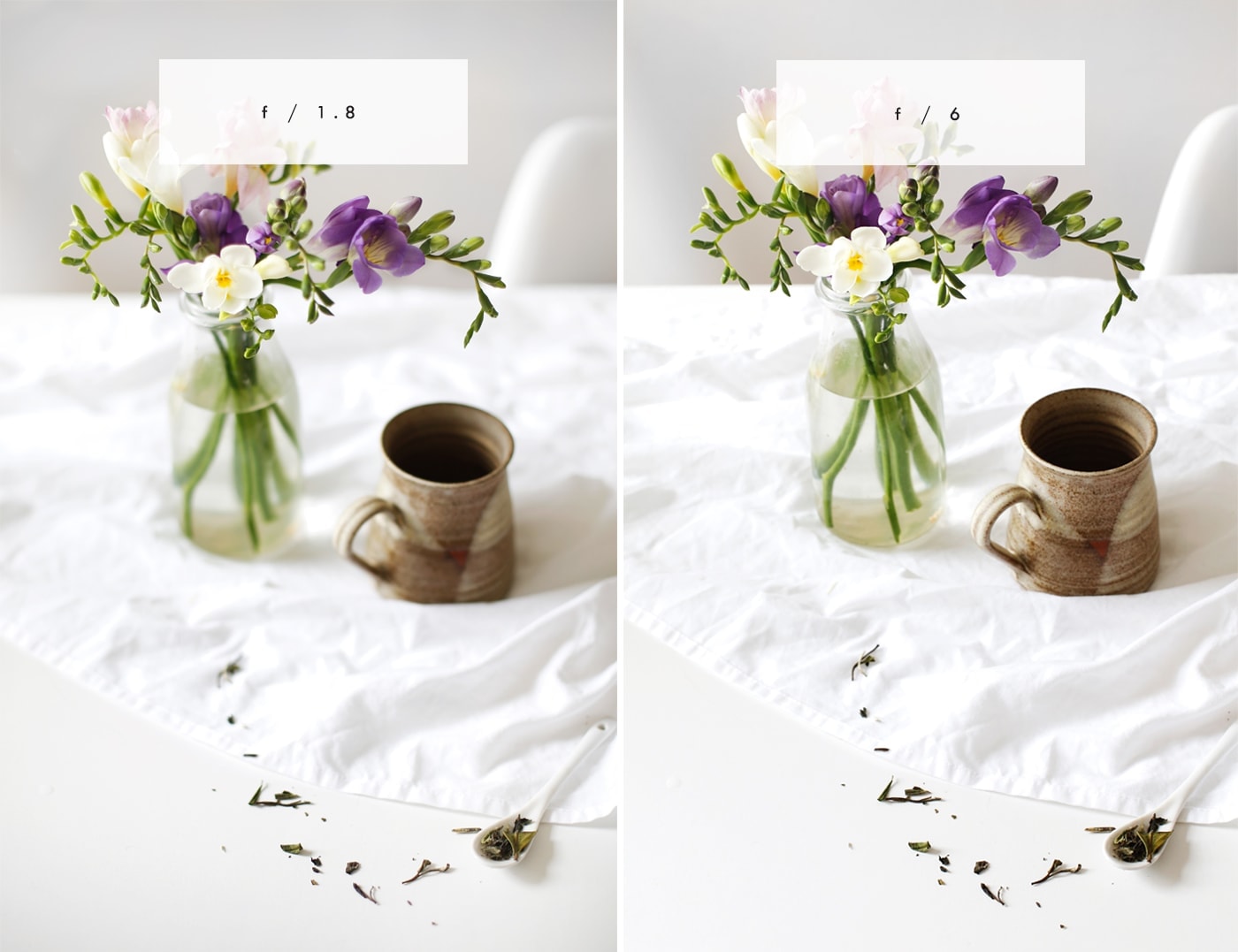
USE NEGATIVE SPACE
During my print degree I would always veer towards placement prints rather than repeat patterns as I just loved playing with negative space. I adore the beautiful simplicity of it and the way space draws the eye to the subject with greater power. This whole concept has definitely found its way into my photography in an increasing sense. Don’t be afraid of space. It can be your friend, I promise. If you imagine splitting your frame into thirds as a guide. Try styling up any of the four middle points and balancing that with space reaching into the opposite corner. This allows your images to look measured and peaceful rather than cluttered and chaotic. The subject can fall on any of the crossed lines but do use that as a rough guide.
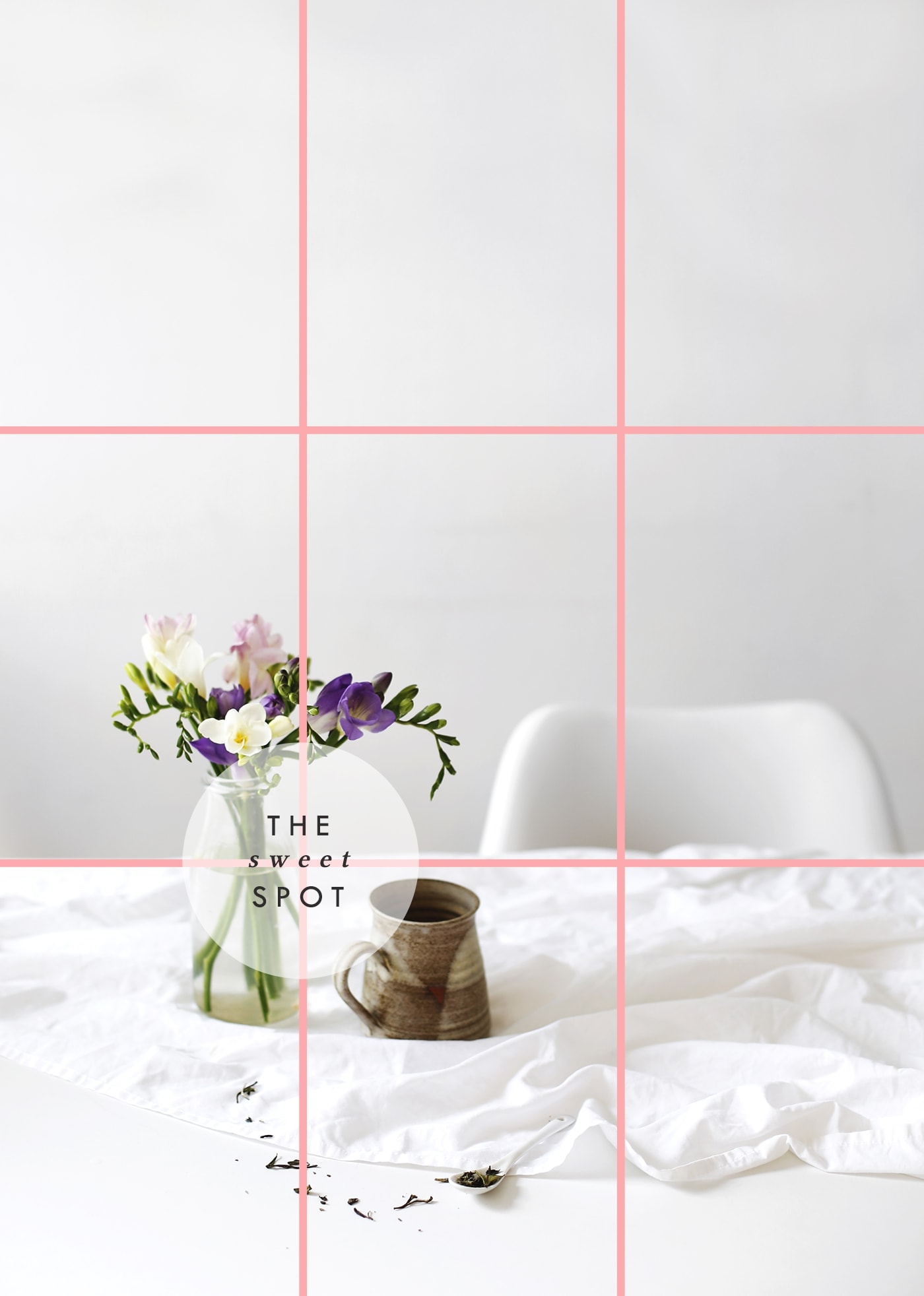
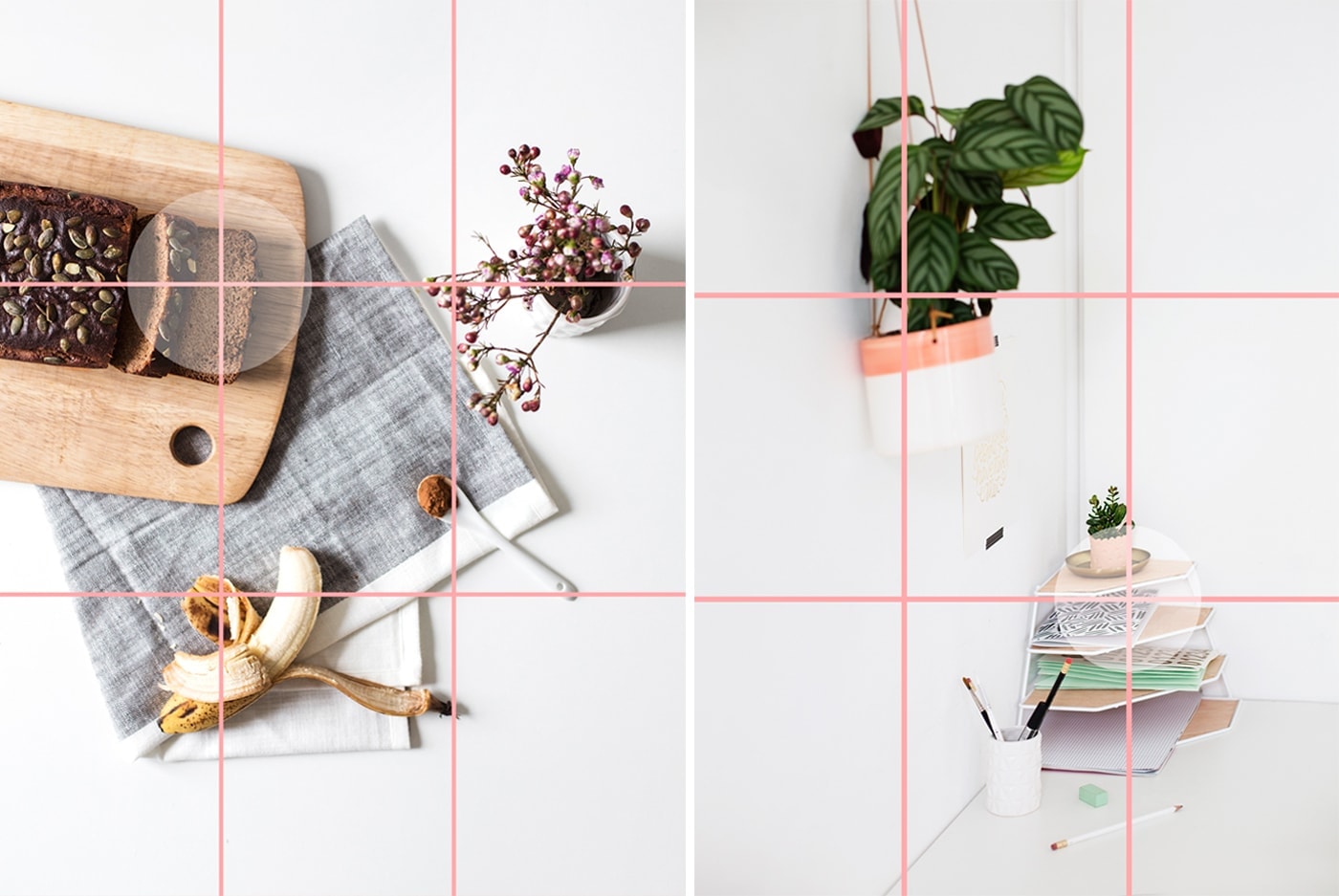
STYLE WITH CONFIDENCE
Sometimes how to style a shot can feel overwhelming but it’s definitely a confidence that builds over time and comes from getting stuck in and having a play. I quite often style up a shot a few times before I’m happy as those great ideas pictured in my head don’t always look so great on camera. I have an abundance of props filling my cupboards (I hear a distant sigh from my husband) but I’m always selective with the ones I use. Don’t throw everything in at once and expect it to look like the work of a pro. ‘Busy’ does not create a stand out image, but instead tends to have the same effect as a photo that’s not in focus. The viewer doesn’t know where to look. Often I’ve been desperate to use a lovely new item I’ve bought but have to admit defeat and shelf the product for a future shoot to make it work. Make sure you play with the positioning of things, with some things further forward and some behind. This creates depth and leads the eye through a shot. It can also add to the overall story of the shot by having items going slightly out of shot. This only gives a hint at what’s out of the frame, adding intrigue.
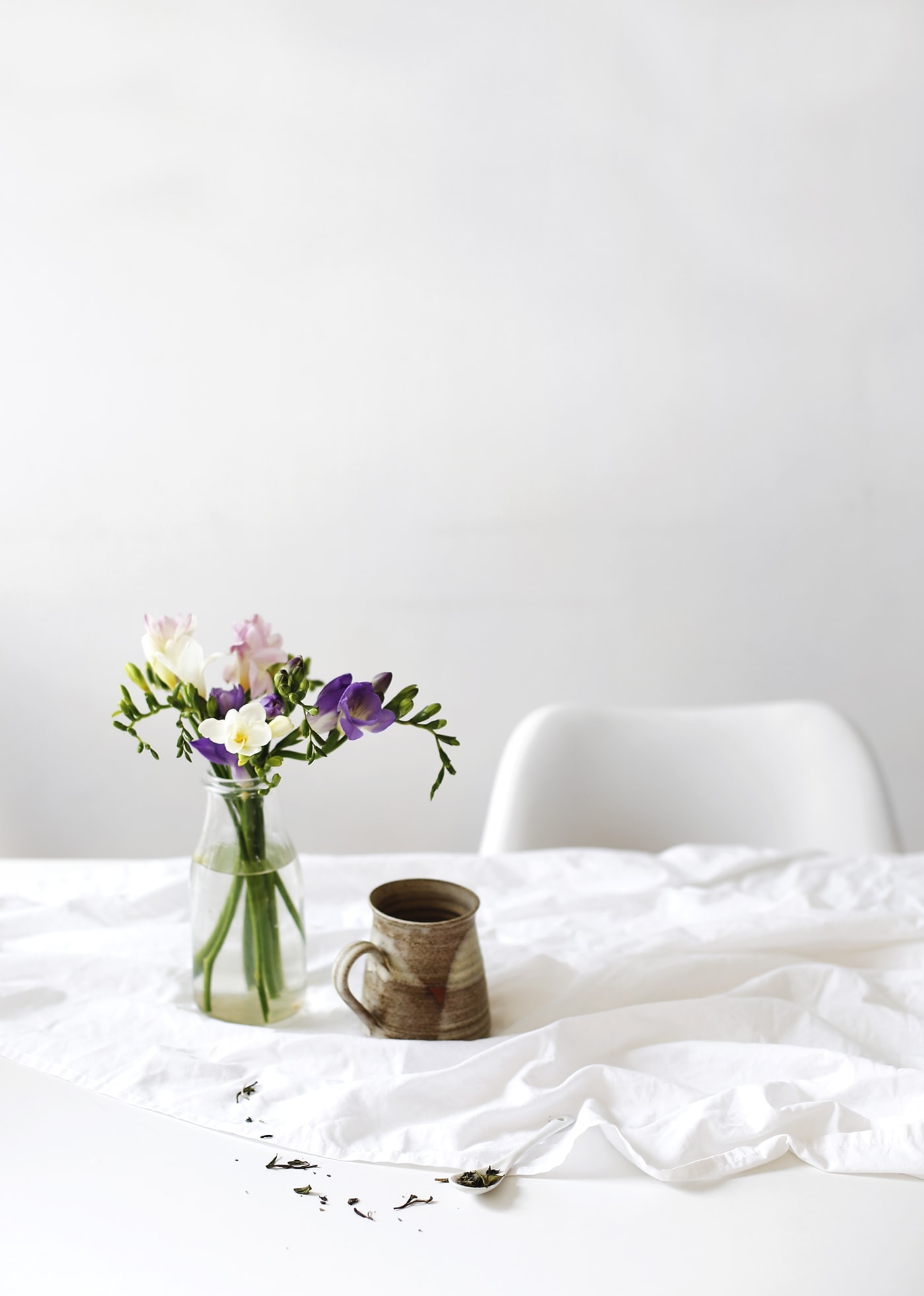
FAKE IT!
Get creative in the space that you have. You’re home may not look like it’s from the pages of a magazine but that doesn’t mean your photos can’t. Invest in some boards to lay under your styled scenes. This can create the illusion of a lovely textured table or a plain white board can make for a blank canvas to work from. I’ve even painted MDF or found old floorboards to use which have been a lifesaver. You can also experiment with materials to look like a table cloth and add texture. Go ahead and create you’re own little world. I love the process, it’s just putting everything away afterwards that I’m not a fan of.
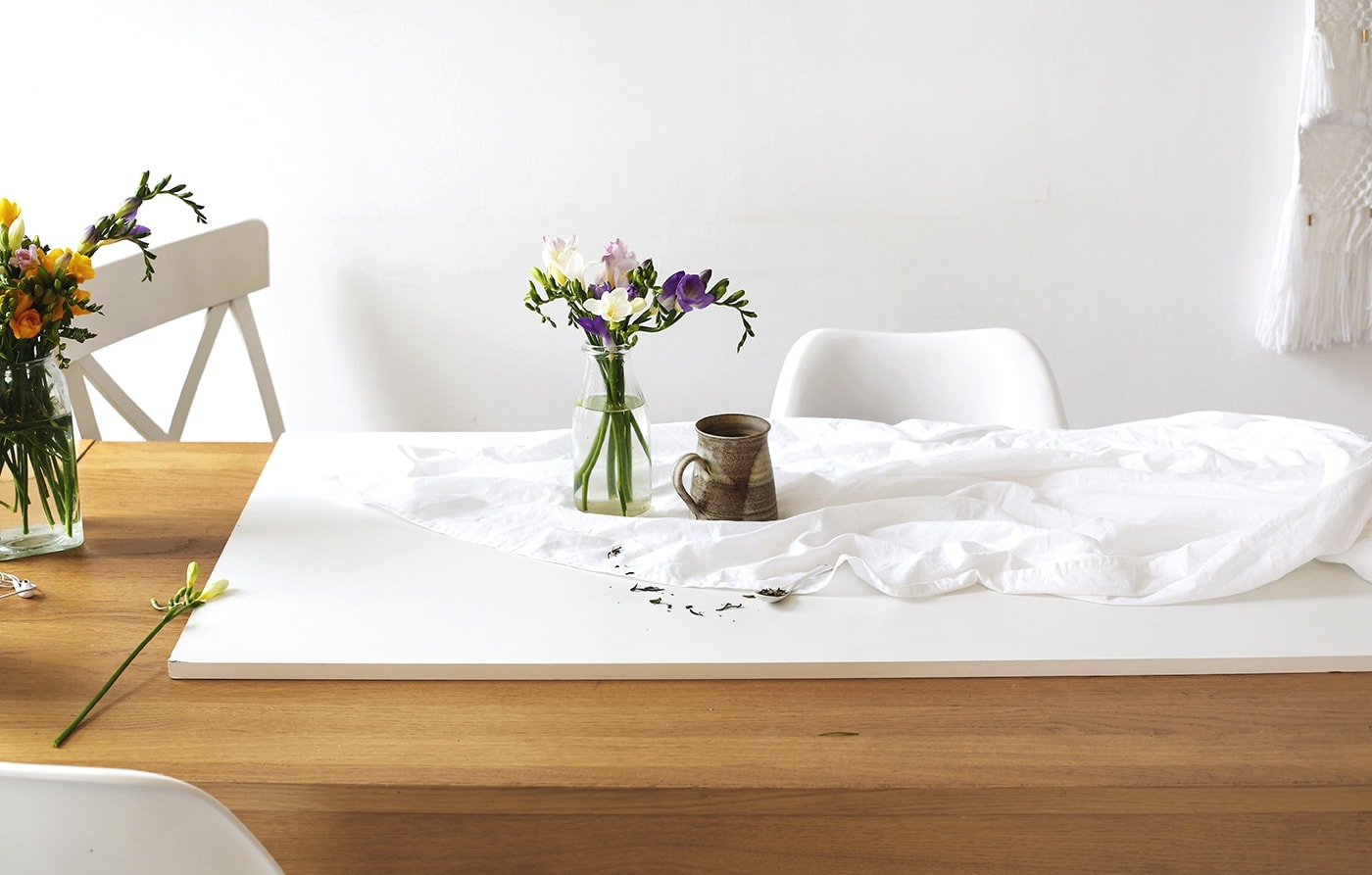
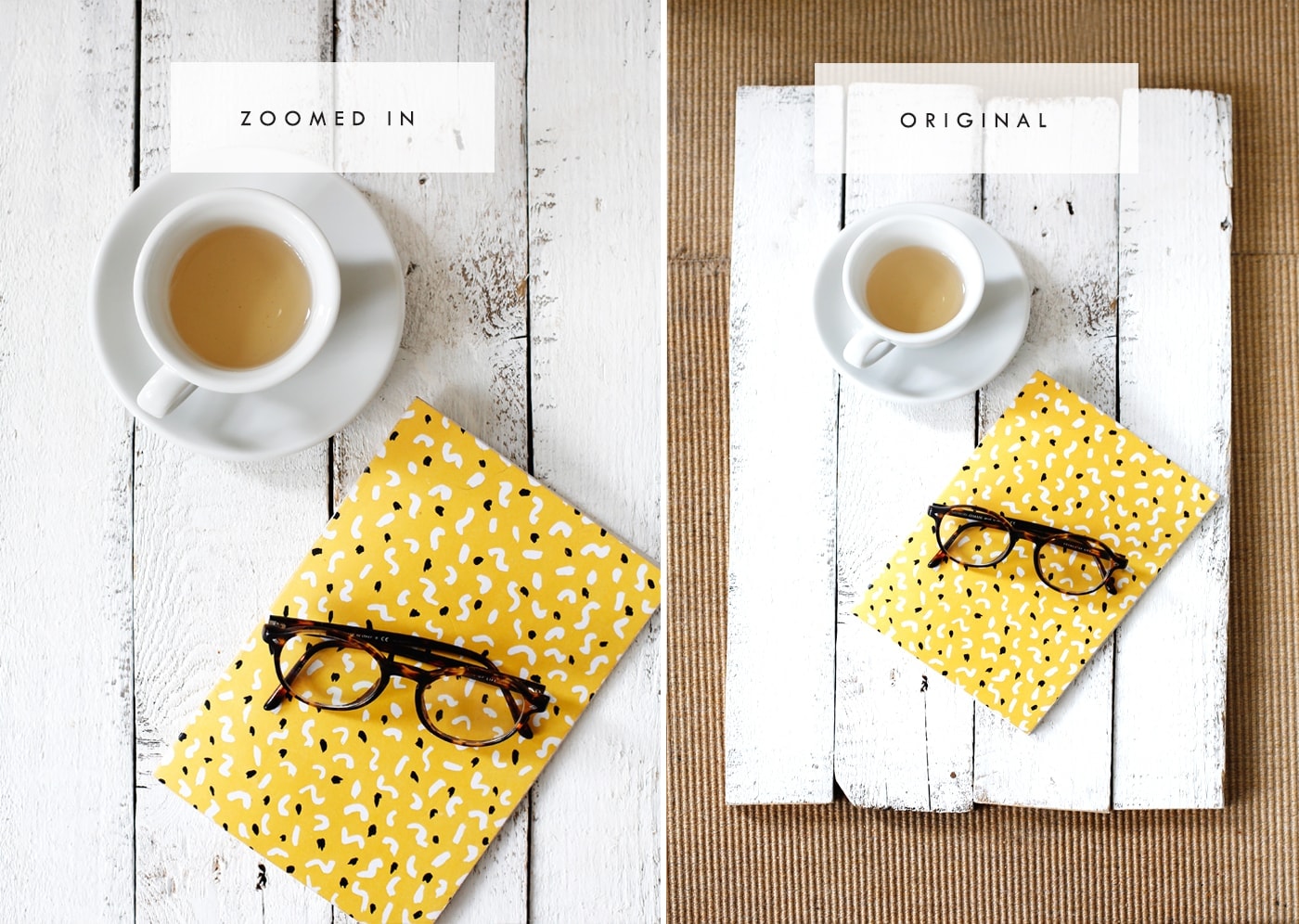
If you have an issue with height where certain items are too short, then simply raise them up and take a much tighter frame so you don’t see the ugly stack of books or whatever it’s resting on. Often the way things look in real life just doesn’t work when you’re trying to balance a frame so don’t be afraid to prop things up or even hang things if they need to be lower. I find I encounter these sorts of challenges all the time with living in such a ‘cosy’ flat.
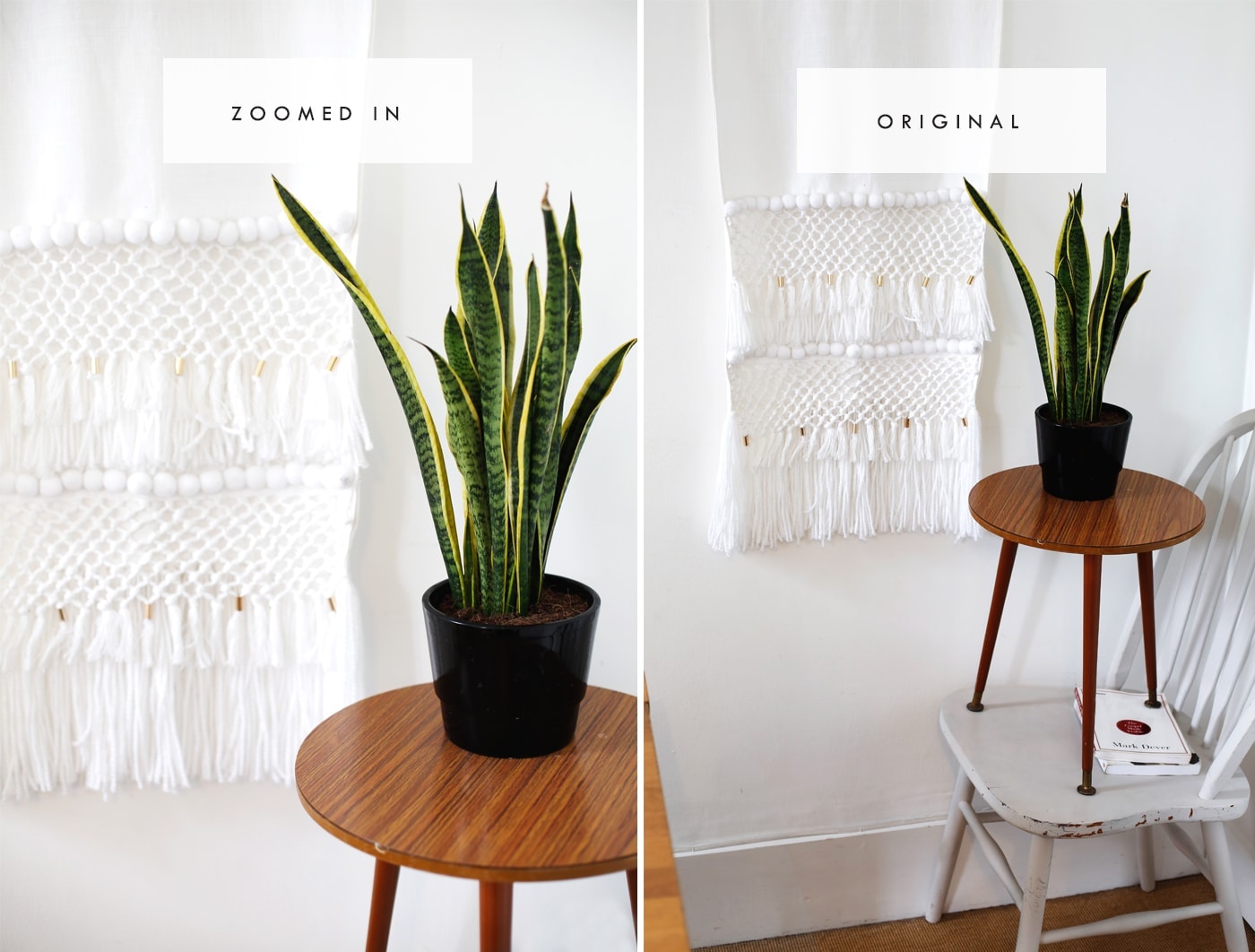
FIND THE RIGHT ANGLE
An angle can literally make a shot! That sounds dramatic but I’ve learnt what a big impact it can have. In general I think the most striking shots are head on, making sure that the horizon line is parallel with the rest of the objects. If you have a grid on your camera view finder then make sure you use it. If you ask me it’s a simple but genius invention, so make the most of it and line everything up. These are usually the images that get pinned the most for me and on that note it’s usually portrait images that do best on Pinterest so you may want to bear that in mind.
Sometimes taking a shot on a diagonal is called for but I would generally say this works better slightly zoomed in for a tighter frame. Still remember to line up the diagonal horizon line with the other objects so it feels deliberate rather than chaotic and awkward.
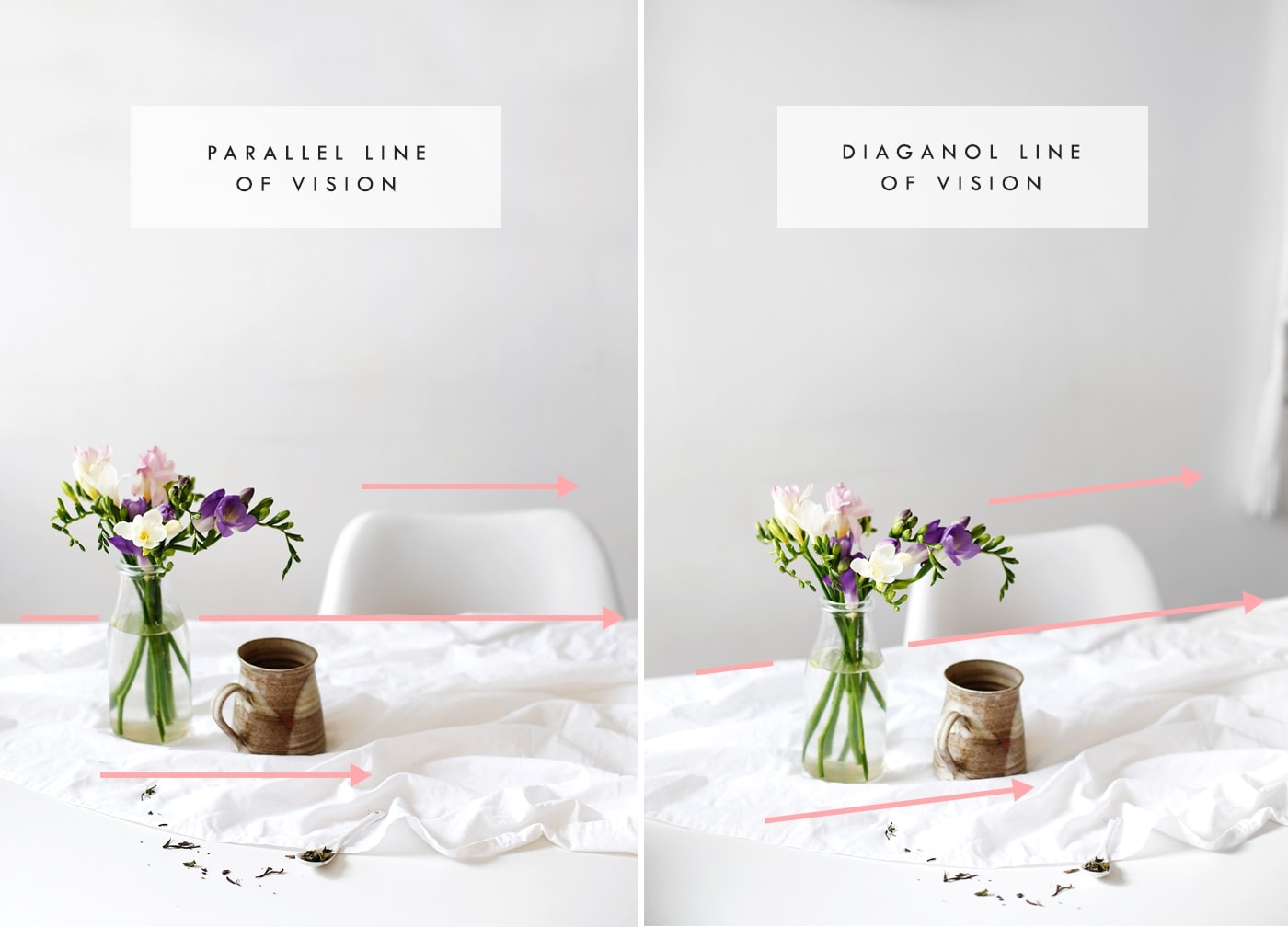
Keep the same things in mind for overhead shots too. If there are natural lines in the wood you’re using or the joins of floorboards, then make sure these are all straight and parallel by making sure you are directly above the scene. This often requires me getting on a chair as I still use a fixed length lens but it’s totally worth it. You can see below the difference between a shot taken directly above and the other at a slightly wonky angle.
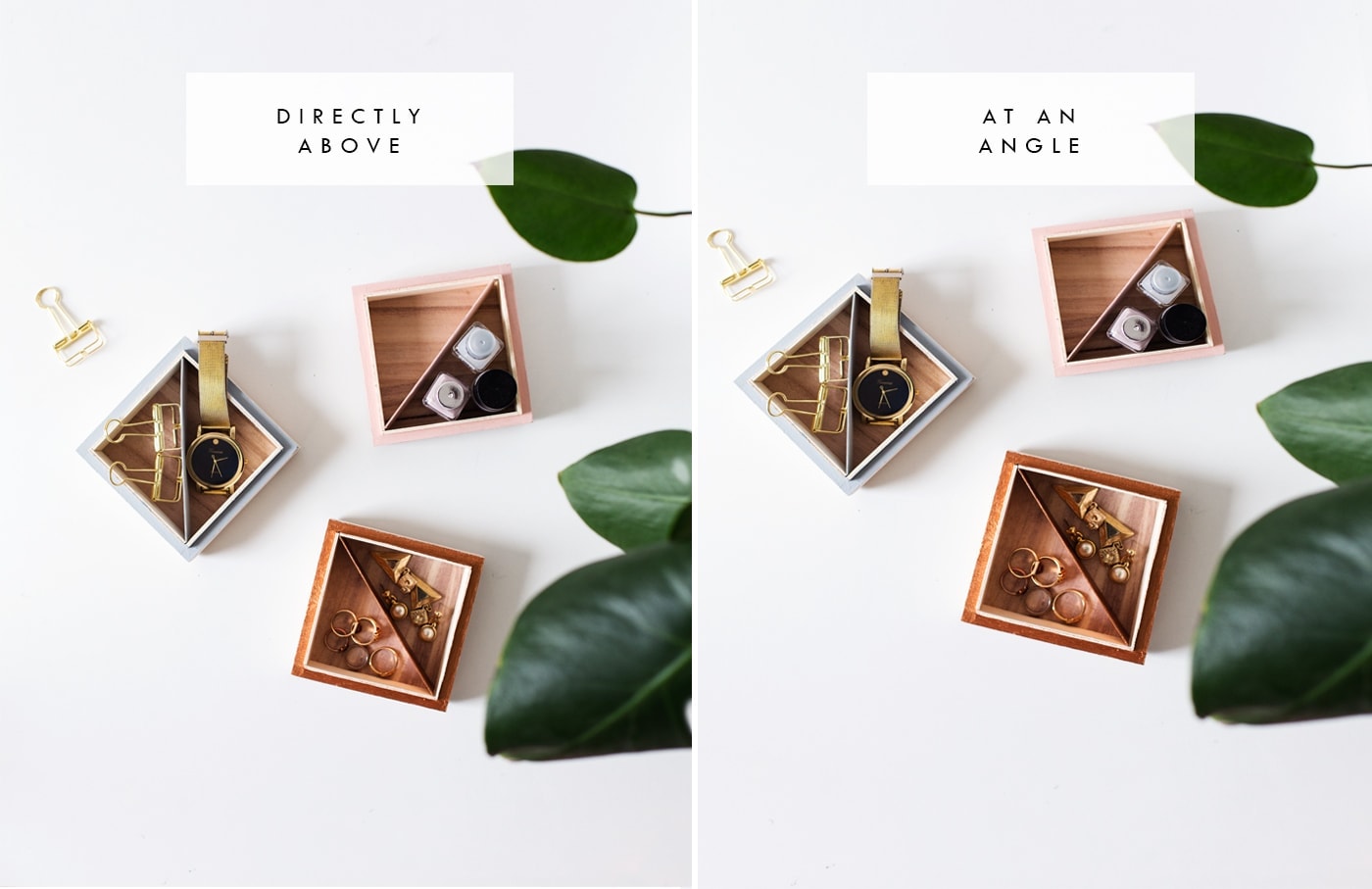
Well I really hope you guys found that helpful! I’ll be putting part two together for tips editing your photos, with the intention it would be up within the next 6 weeks rather than 6 month (oops). Let me know if you found it helpful if you still have any questions on this.
You might also like
Meet The Lovely Drawer
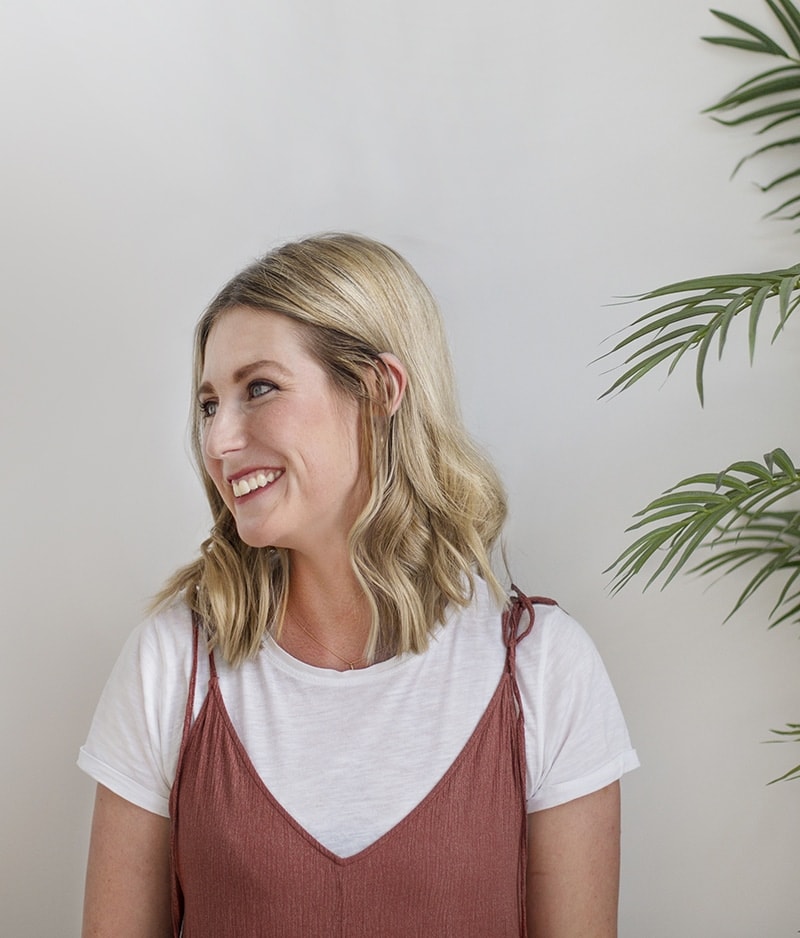
Hi, I’m Teri and welcome to my own creative corner of the internet. I blog about interiors, DIY projects, design inspiration and my general life so stick around have a read and say hi.
In the shop
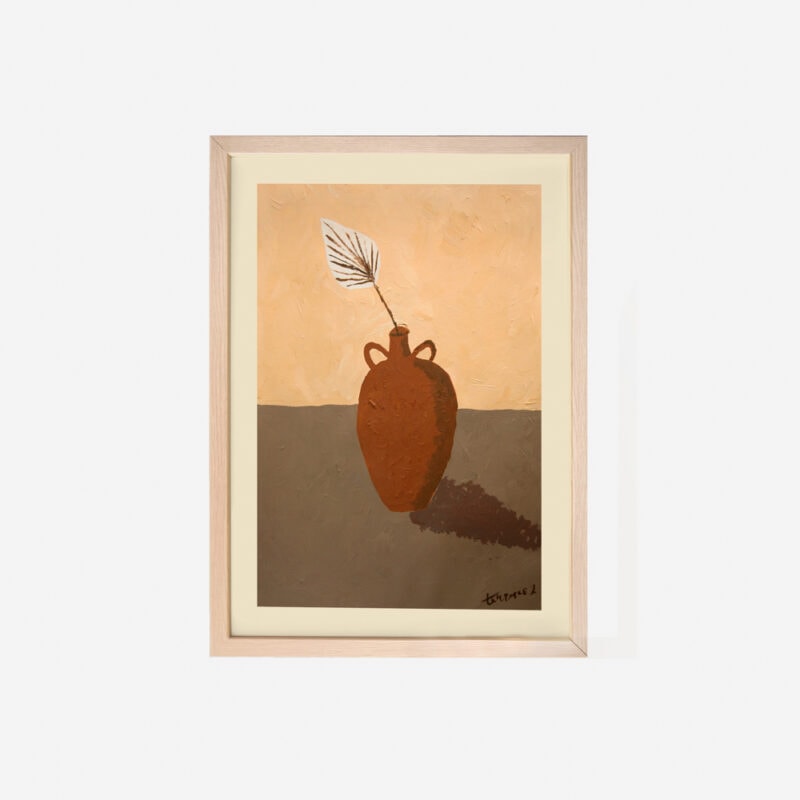
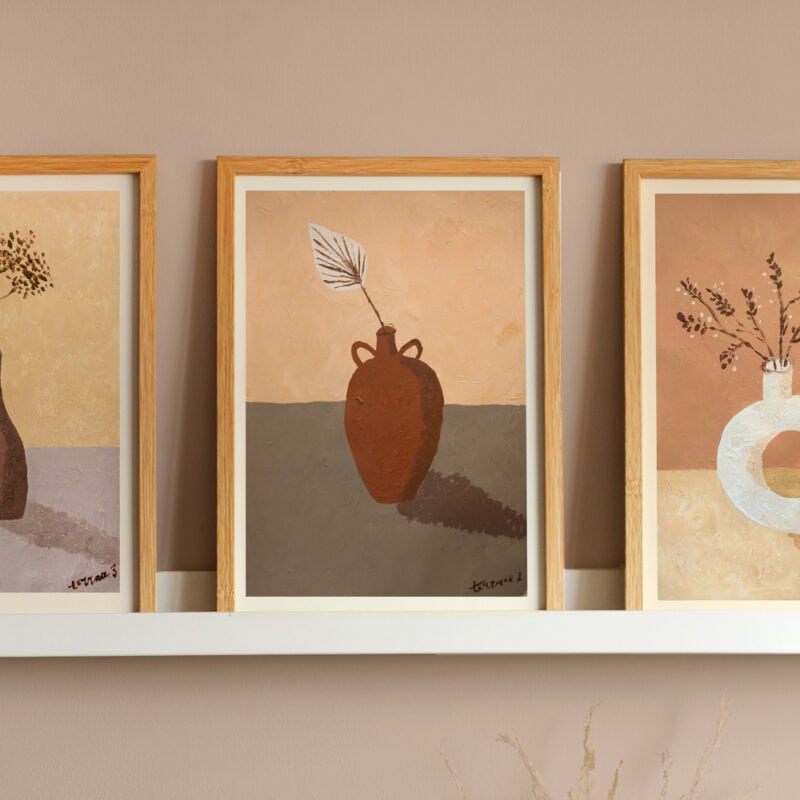 Quick ViewSelect options
Quick ViewSelect optionsTerrace 1
£20.00 – £25.00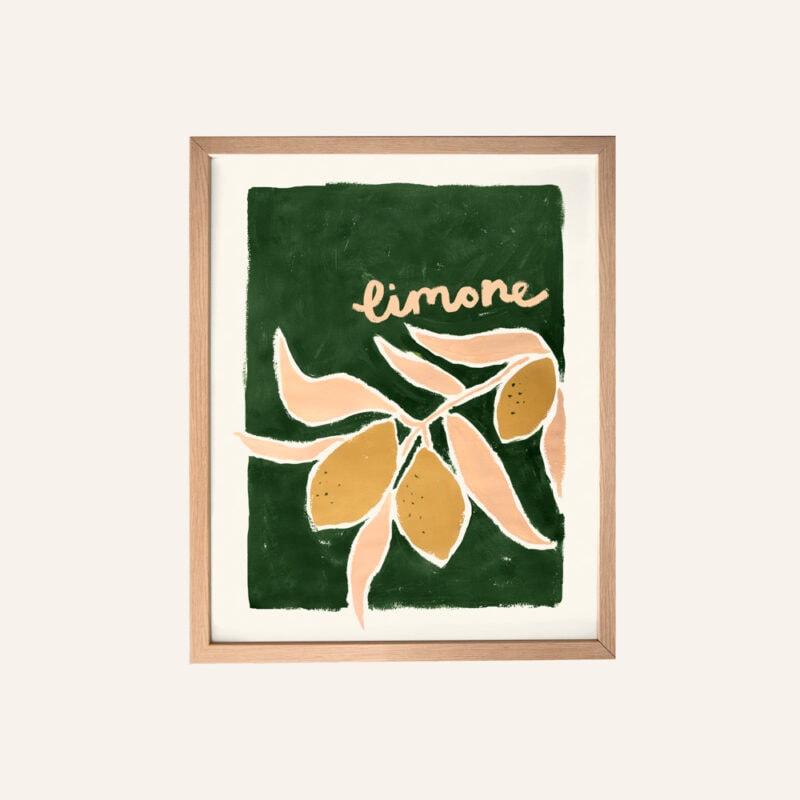
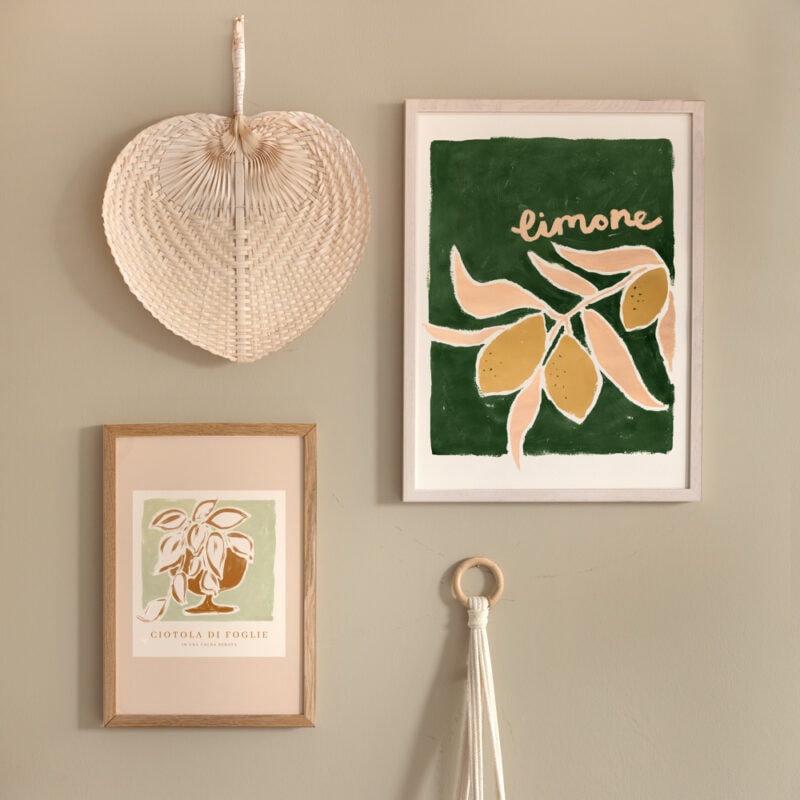 Quick ViewSelect options
Quick ViewSelect optionsOrchard Days
£20.00 – £25.00
Work with Me
The Lovely Drawer is an award winning blog with a loyal audience that has grown over the years. I love working with brands small and large on exciting collaborations that can bring products alive in my own signature aesthetic.
